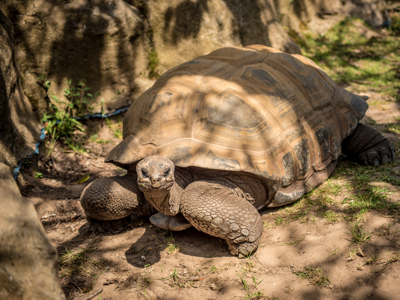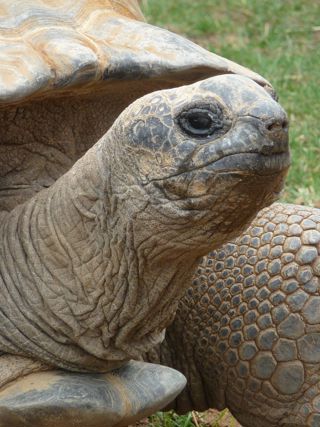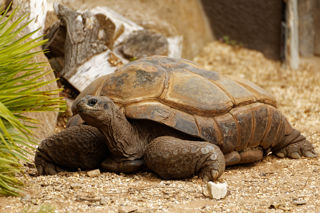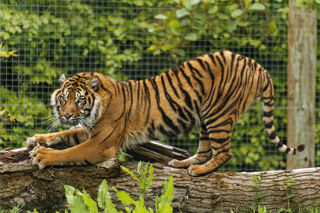
Aldabra Tortoise
The Aldabra tortoise is one of the largest tortoises in the world. They have a thick, domed shell with robust limbs covered in scales.

Aldabra tortoises age very slowly. In 2005, an Aldabra tortoise was found dead in India. Its shell was carbon-dated showing it had reached the age of 255 years old. These can be social animals, often gathering in herds in the grasslands. They are good swimmers being naturally buoyant and able to hold their breath for 20-30 minutes.
Giant tortoises become sexually mature in their thirties. Mating is noisy with the males bellowing loudly. After mating, the female will lay 9-25 eggs into soft sand but only around half of these eggs will be fertile. The hatchlings emerge 3.5-7 months later, depending on conditions.

Their diet consists of plants and grasses but they will also supplement their diet with carrion (dead animals).
The Aldabra tortoise is the only African giant tortoise to have survived in the wild. Their population was severely threatened between the 17th and 19th centuries due to hunting for meat. Now they are struggling against habitat destruction and introduced species. These introduced species include predators such as rats and cats that eat their eggs, and competition for grazing with goats. They are now protected and have conservation breeding programs on the island of Mauritius.
Key Facts:
Conservation Status: Vulnerable
Distribution: Aldabra Atoll
Habitat: Grassland, Scrublands, Swamp
Diet: Flowers, Grasses, Herbs, Leaves
Weight: 150 – 250kg
No. of young: 9 – 25
Life Span: 150+ years

SUPPORT OUR ANIMALS
If you're looking for an alternative way to donate to Twycross Zoo, you can help support our animals and our zoo keepers by purchasing something from our Amazon Wishlist!
Updated regularly by our zoo keepers, the items on the list help to provide enrichment for our animals and keep their habitats well maintained.
Every donation helps us as a conservation charity.
